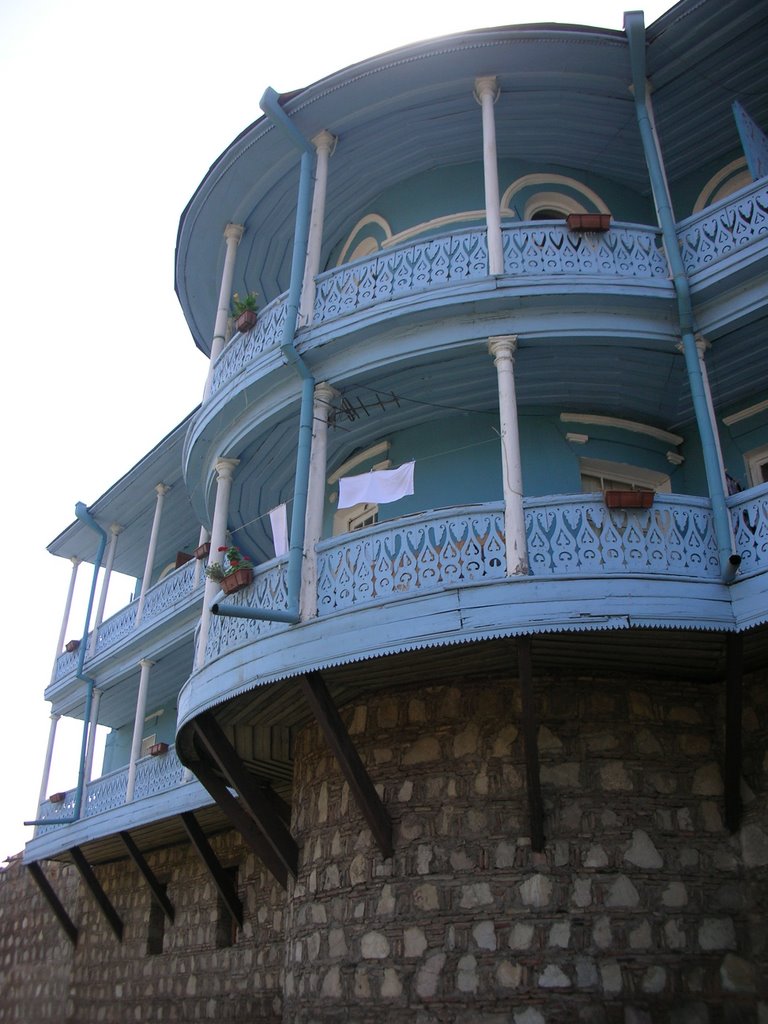19th century Tbilisi architecture merged east and west in many respects. European architects came and made their own contributions, including renowned Germans Otto Jakob Simonson, who created the former Viceroy’s Palace which now functions as the Youth Palace at 6 Shota Rustaveli Avenue, Albert Salzmann, Edward Sesemann, Paul Stern, who designed the (now) Art Palace at 6 Kargareteli Street, and Victor Johann Gottlieb Schröter, who was behind the exotic neo-Moorish Opera House on Rustaveli Avenue.
But something that was never taken away from the Tbilisi was the characteristic hanging balconies.
Take a walk with us to discover the best examples of this charming feature of the capital.
8 DUMAS STREET (RESIDENTIAL HOUSE)
Dating back to the 1800s, this building with a mezzanine floor boats a two-layered traced gallery.
13 DUMAS STREET (RESIDENTIAL HOUSE)
With a façade that follows the curve of the street, the balcony on this mid-19th century building is decorated with a tri-pillared ached windowed gallery, one of the best in Tbilisi- and there’s a second one inside overlooking the courtyard!
56 VERSTkHLI STREET (RESIDENTIAL HOUSE)
Built in 1860 at the place where the Dighomi Gate to the city once stood, this building has three different facades: one overlooking the yard boasting a wooden balcony; one overlooking Dumas Street featuring a brick wall with pilasters, and the last at the corner of the streets with a hanging wooden balcony.
BARTASHVILI STREET (RESIDENTIAL HOUSES)

Hard to miss, especially at night when the ornamented wooden balconies are lit up in multi-colored fashion- running from one end of the street to the other. These buildings make up what was once part of the city wall and were reconstructed in 1979 by architect Kavlashvili.
More balconied discoveries in Part 2 later this week!
